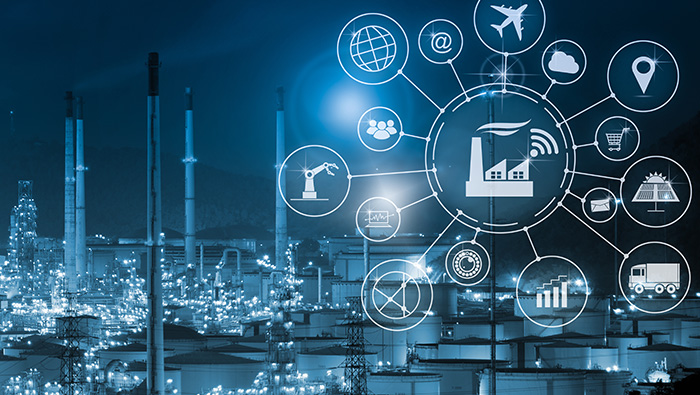Countries are looking towards more sustainable, cleaner energy solutions. Renewable sources of energy such as solar, wind and biogas are very promising, but the transition cannot happen overnight. It is predicted that over the next 10 years the overall energy mix in the southern African region will steadily shift away from traditional coal towards natural gas as an intermediate energy source. This region is fortunate to have a number of significant natural gas resources, both offshore and in parts of the interior.
The challenges of working in remote locations
I am involved in a number of projects investigating the feasibility of coal-bed-methane (CBM) in southern Africa. During one of these projects, I came across an interesting control and automation challenge. In this project, the mining operation is in a very remote location, far away from any of the infrastructure you would have in a typical industrial zone. There is very little if no connectivity. The gas fields are spread out over hundreds of square kilometres where there is little or no other development. Across the gas field, by the end of the project, hundreds of boreholes (wells) will be drilled down just far enough to reach the underlying coal beds from which the methane-rich gas can be extracted. The footprint of the wellheads at the surface is very small, approximately the size of a small swimming pool with a limited amount of processing equipment. This method of extraction leaves the underlying coal beds intact and avoids the need for expensive and environmentally damaging underground mining. The trapped methane-rich gas already in situ slowly permeates through the coal beds to collect in a manifold system that routes the gas, together with a fair amount of pumped water, up to the surface.
Each well requires careful monitoring and control of the water level, gas pressure and flow rate, as well as a number of other critical parameters. The gas from the wells is routed by pipeline to a central processing facility.
Owing to the remote location of the well field, the number of wells and the distances involved, it is not feasible to have a process operator visit each wellhead often. The pumping, gas processing and control equipment need to be able to operate autonomously for weeks on end. Should the data links fail, the well must continue to operate safely, and if necessary, shut down without damaging equipment, and avoiding harm to the environment. It must be possible to control level and flow/pressure set-points from a remote location to balance the flow rates to the downstream consumers. It must also be possible to send alerts/alarms from the wellhead to the operators when there is a fault. Historical data relating to the performance of each well needs to be collated and stored for later analysis. The operating status of each well needs to be displayed in a dashboard that allows the operators to get a good overview of the entire operation. On-site activities such as sampling and equipment maintenance need to be logged in a database to provide important context information for later analysis.
Industry 4.0 realisation
This example highlighted for me some of the real-world control and automation design decisions that need to be taken in such a remote location. What is particularly interesting to me (with my IT background) is that, provided certain steps are taken, the entire system is ideally suited to take advantage of cloud architectures and innovative concepts such as the IIoT (Industrial Internet of Things), edge computing, cloud data analytics and AI, with advanced visualisation/dashboards, all through the cloud. While this might be an exciting project for some, it is probably at the same time a nightmare for a control and automation engineer concerned about connectivity, reliability, performance and security.
Connecting the control units at each well to a common supervisory control system can be achieved using fibre-optic, wireless or satellite connections. Each of these connectivity options has a number of advantages and disadvantages, as well as cost implications. Owing to the remote location of the well field, most wells are out of range of commercial cellular networks (ruling out the use of 3G, LTE and certainly 5G). Under the circumstances, building and operating a dedicated industrial wireless network is probably the most cost-effective alternative. This will require Wi-Fi communication towers strategically positioned across the well field with directional antennas so that each wellhead control system can communicate data wirelessly to a central break-out point to the Internet. For the connection to the cloud, a good satellite link is the best alternative, however, this can introduce latency and reliability challenges, and bandwidth management is also critical.
Modern control engineers need a diversity of skills
Because the wells need to operate autonomously there needs to be a local edge device at each wellhead that will handle the control functions as well as data acquisition and storage, as well as the synchronisation of alarms, setpoints and historian information to the central cloud service. The local device should be able to operate autonomously for a number of days until a technician can get to site in the event of a fault. Some of the local control functions can be achieved with a small PLC. In our application, we are investigating a device called an RTU (remote telemetry unit). The RTU connects via a secure cellular-enabled WiFi router to the closest wireless access point on a tower, and then to a cloud service via the satellite infrastructure. The RTU has a small database for local alarm, PID control and also a limited historian. The software is designed to synchronise all this information to the cloud. The system is designed to be fault-tolerant to handle most of the normal connectivity outages.
The use of an RTU communicating with the cloud replaces the need for a traditional SCADA device, although such a SCADA system will be utilised at the central processing facility for more traditional control room operations. Integration of the cloud-based service with the on-site SCADA will make sure that field control and the central processing equipment is handled in a common interface for the operators.
The availability of detailed operational data from each well in the cloud allows geologists and engineers to analyse, consolidate and optimise operations remotely. Specialised modelling of the gas flowrates, wellfield performance, coalbed permeability and so on can be done outside the country, all from a common cloud database.
This project has recently illustrated to me that the concepts of IIoT, edge computing, cloud-based supervisory control, and cloud-based AI, analysis and advanced visualisation are not just abstract concepts for advanced applications in first-world countries. A modern control engineer needs to be familiar with all of these concepts in order to take advantage of these technologies to solve real-world challenges. Hybrid systems that involve localised control and automation in combination with cloud-based supervisory control systems are likely to become quite prevalent, not only in the energy industry but across many other similar applications in remote locations.
This article was first published on SA Instrumentation and Control.


